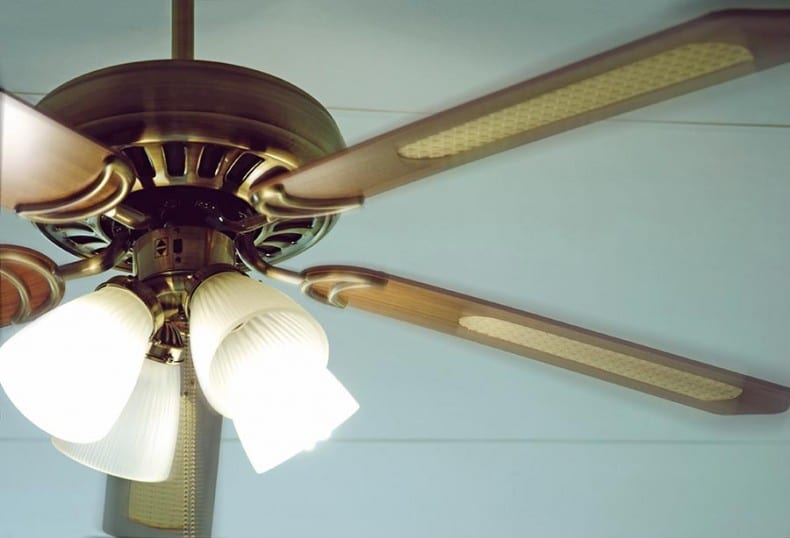In the realm of indoor environmental quality, the ubiquitous ceiling fan has long been a staple feature in households and commercial spaces alike. Praised for its ability to circulate air, regulate room temperature, and create a comfortable ambiance, the ceiling fan is often considered a must-have addition to any living or working space. However, recent discussions have emerged questioning whether this seemingly innocuous appliance may inadvertently contribute to indoor air pollution. This article seeks to delve into the intricate relationship between ceiling fans and indoor air quality, examining the mechanisms at play, potential risks, and strategies for mitigation.
Understanding the Dynamics of Ceiling Fan Operation

Before delving into the potential impact of ceiling fans on indoor air quality, it’s crucial to understand how these devices operate. Ceiling fans typically consist of a motor housed within a central hub, connected to multiple blades that rotate when powered on. As the blades spin, they create a downdraft or updraft depending on their orientation, effectively moving air throughout the room. This airflow can help distribute heat during the winter months and create a cooling breeze in the summer, enhancing overall comfort.
Ceiling Fans and Airborne Particle Redistribution
One of the primary concerns surrounding ceiling fans is their potential to redistribute airborne particles within enclosed spaces. Dust, allergens, pet dander, and other particulate matter tend to settle on surfaces over time. When a ceiling fan is turned on, the airflow it generates can disturb these settled particles, causing them to become airborne once again. This phenomenon has led to worries that ceiling fans may exacerbate indoor air pollution by reintroducing previously trapped pollutants into the breathing zone.
Assessing the Impact on Indoor Air Quality
The impact of ceiling fans on indoor air quality hinges on various factors, including the frequency and duration of use, the speed of the fan, and the cleanliness of the fan blades. In homes with poor ventilation or high levels of indoor pollutants, ceiling fans may inadvertently contribute to worsening air quality if not used judiciously. However, in well-ventilated spaces with minimal indoor contaminants, the impact of ceiling fans on air quality may be negligible.

Potential Health Implications
Poor indoor air quality can have significant implications for human health, exacerbating respiratory conditions such as asthma and allergies, and potentially leading to other health issues over time. While ceiling fans themselves do not emit pollutants, their role in redistributing airborne particles may pose risks, particularly for sensitive individuals. Those with respiratory ailments or allergies may experience worsened symptoms in environments where ceiling fans are used indiscriminately, stirring up dust and other irritants.
Strategies for Mitigation
Mitigating the potential impact of ceiling fans on indoor air quality requires a proactive approach. Implementing strategies to minimize airborne particle dispersion while maximizing airflow can help maintain a healthy indoor environment. Regular cleaning and maintenance of ceiling fan blades can reduce the buildup of dust and allergens, minimizing the risk of pollutant redistribution. Additionally, using ceiling fans in conjunction with high-quality air filters and proper ventilation systems can help capture and remove airborne contaminants, improving overall air quality.
The Role of Ventilation Systems
Ventilation systems play a crucial role in maintaining indoor air quality by providing a constant supply of fresh outdoor air while exhausting stale air and pollutants. When used in tandem with ceiling fans, ventilation systems can help mitigate the potential negative effects of fan operation on indoor air quality. However, improper ventilation or inadequate airflow can compromise the effectiveness of both ceiling fans and ventilation systems, leading to stagnant air and increased pollutant levels.
Environmental Considerations
In addition to concerns about indoor air quality and human health, there are also environmental implications associated with ceiling fan usage. While ceiling fans consume significantly less energy than air conditioning systems, their widespread adoption can still contribute to overall energy consumption and carbon emissions. As such, striking a balance between energy-efficient cooling solutions and indoor air quality management is essential for minimizing environmental impact while maintaining occupant comfort.

Conclusion
In conclusion, while ceiling fans undoubtedly offer numerous benefits in terms of enhancing airflow and regulating room temperature, their potential impact on indoor air quality should not be overlooked. The redistribution of airborne particles by ceiling fans can contribute to elevated pollutant levels, posing risks to human health, particularly for individuals with respiratory conditions or allergies. However, by understanding the mechanisms involved and implementing appropriate mitigation strategies, it is possible to minimize the potential negative effects of ceiling fan usage on indoor air quality. Ultimately, achieving optimal indoor environmental quality requires a holistic approach that considers factors such as ventilation, filtration, and energy efficiency to create healthy, comfortable living and working spaces for occupants.






GIPHY App Key not set. Please check settings